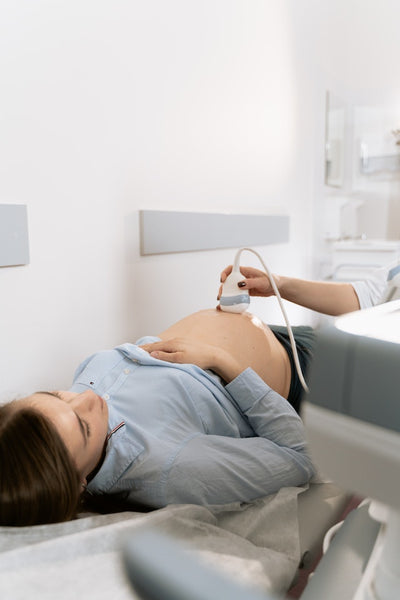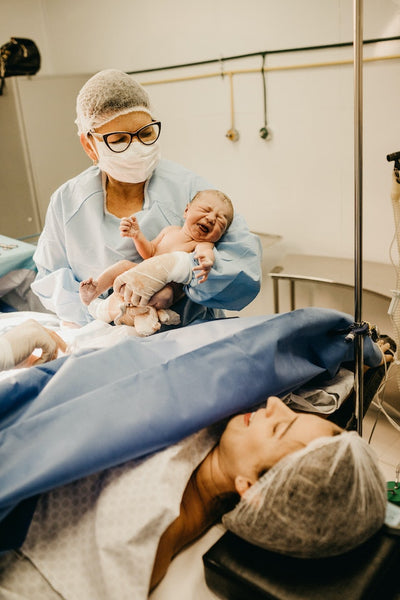Worried About a Frank Breech Baby? What Parents Need to Know
 The way a baby is positioned in the uterus before birth (known as fetal presentation) can significantly impact the labor and delivery process. While babies are active and move around during pregnancy, they typically settle into a specific headfirst position for birth called cephalic presentation. However, there are other possible positions a baby may assume just before labor begins.
The way a baby is positioned in the uterus before birth (known as fetal presentation) can significantly impact the labor and delivery process. While babies are active and move around during pregnancy, they typically settle into a specific headfirst position for birth called cephalic presentation. However, there are other possible positions a baby may assume just before labor begins.
What Is a Frank Breech Baby?
When an infant's buttocks or feet are in position to emerge first during delivery, it's called a breech presentation. This occurs in only about 3 to 4% of full-term births. The most common breech presentation is frank breech. Frank breech baby legs are folded flat up against their head and their bottom is positioned near the cervix. Among full-term breech births, the frank breech presentation accounts for approximately 50% to 70% of breech cases.
Other Types of Breech Position
It's important to note that there are also other types of breech presentations.
- Complete breech: In this position, the baby's buttocks are oriented downward, and both the hips and knees are flexed, essentially folded under themselves.
- Footling breech: This involves one or both of the baby's feet pointing downward, and they may emerge before the rest of the baby's body during delivery.
- Transverse lie: In this type of breech presentation, your baby is positioned horizontally across your uterus, as opposed to the usual vertical alignment. Consequently, the baby's shoulder may be the first part to enter the birth canal.

What Causes a Breech Presentation?
The exact cause of a baby being in a breech position is not always clear. However, several factors could contribute to this situation:
- Expecting multiples (such as twins or more): When carrying multiple babies, it can be more challenging for each one to find the optimal position for birth.
- Amniotic fluid levels: Having too much or too little amniotic fluid can affect the baby's positioning.
- Uterine abnormalities: If the uterus has an irregular shape or contains growths like fibroids, it may not provide enough space for the baby to move into the correct position naturally. Typically, the uterus is shaped like an upside-down pear.
- Placental placement: In cases of placenta previa, where the placenta covers all or part of the cervix, it can interfere with the baby's ability to settle into the head-down position.
- Premature birth: Babies born before 37 weeks of gestation may not have had enough time to turn into a head-first position.
- Birth defects: Occasionally, a baby may have a congenital condition that prevents them from naturally assuming a head-down orientation.
Impact of a Frank Breech Baby on Pregnancy
Typically, your pregnancy remains unaffected by a breech presentation. In most cases, a frank breech baby after birth is quite healthy, although there is a slightly increased risk for specific birth defects. You might notice some differences in your baby's movements. Depending on their position, their kicks may be felt lower in your abdomen, or you may sense a firm lump (your baby's head) near your ribs.

Possible Risks and Complications for a Frank Breech Baby
In the majority of cases, a frank breech baby does not experience abnormalities or other problems later in life due to their presentation. The most common issue associated with breech babies is hip dysplasia due to their reduced movement and position in the uterus.
Complications associated with any breech presentation typically arise during an attempted vaginal delivery. While some breech babies can be safely delivered through the vaginal route, attempting a vaginal breech birth does carry certain risks, including potential injuries to the baby's arms or legs (dislocations or fractures). During a vaginal delivery, it’s also possible the umbilical cord might become compressed or twisted, which can lead to oxygen deprivation and, in turn, nerve or brain damage.
Treatment Options for Delivering a Frank Breech Baby
If you're beyond the 36th week of your pregnancy, and your baby is in a frank breech presentation, your healthcare provider may attempt to reposition the baby into a head-down position. This is achieved through a procedure called external cephalic version, where one or two members of the healthcare team use their hands to apply gentle pressure on your abdomen to encourage the baby to shift into a head-down position. If the procedure doesn't succeed or if the baby reverts to a breech position, it's advisable to discuss delivery options with your healthcare team.
Typically, most babies in a frank breech position are delivered via planned C-section. This is often considered the safer route for delivering a baby in the frank breech position. However, in the absence of other complications, a vaginal delivery might be considered if the following conditions are met:
- Adequate emergency resources are readily available.
- The baby has reached at least 36 weeks of gestation.
- The baby is of a suitable size, neither too large nor too small.
- The baby's head is properly positioned in a flexed manner.
- The healthcare team possesses experience in handling breech deliveries.
- Your pelvic size is sufficient.
- Continuous monitoring of the baby's condition is ensured.
- You have previously had a vaginal delivery.
It's essential to note that should any complications arise during the delivery process, an emergency C-section may still be required. Whenever feasible, the preferred approach is to perform a cesarean section for any breech baby who is premature or in distress. This preference arises from the fact that vaginal deliveries, even when the mentioned criteria are met, carry a higher risk of challenging births and potential birth injuries. Therefore, most doctors favor cesarean section for all breech presentations.
The Takeaway on a Frank Breech Baby
Although the majority of babies naturally assume a head-down position by the 37th week of pregnancy, some continue to remain in a bottom-down orientation. In such instances, they are commonly found in the frank breech position, characterized by their bottom being situated downward while both legs are elevated. In these situations, there is still a possibility that the baby might spontaneously turn head-down before the onset of labor. However, if this doesn't occur, the typical course of action is to deliver the baby via a cesarean section (C-section). Nevertheless, in specific circumstances, it is feasible for frank breech babies to be delivered vaginally.
Disclaimer: The information on our site is NOT medical advice for any specific person or condition. It is only meant as general information. Please contact your health provider if you have any medical questions or concerns about your child or yourself.









